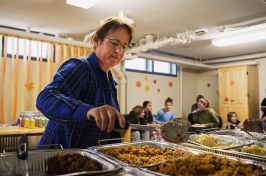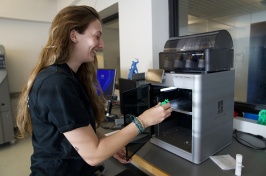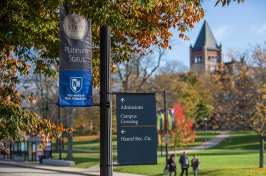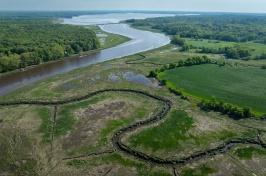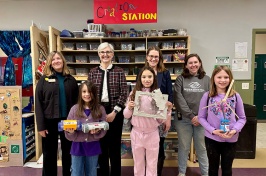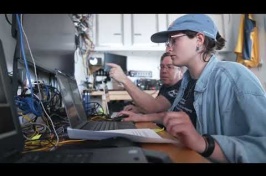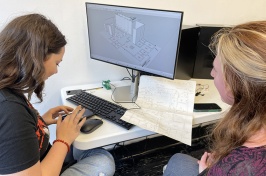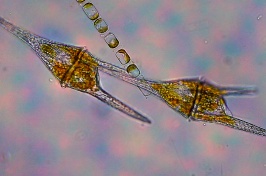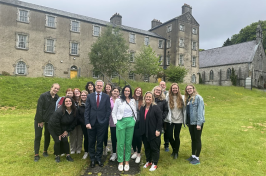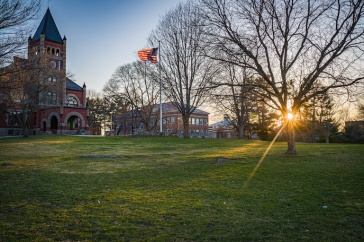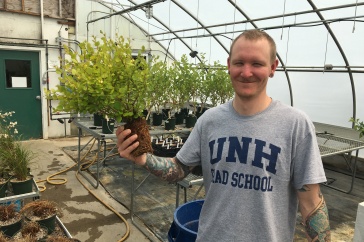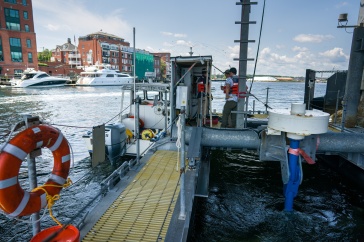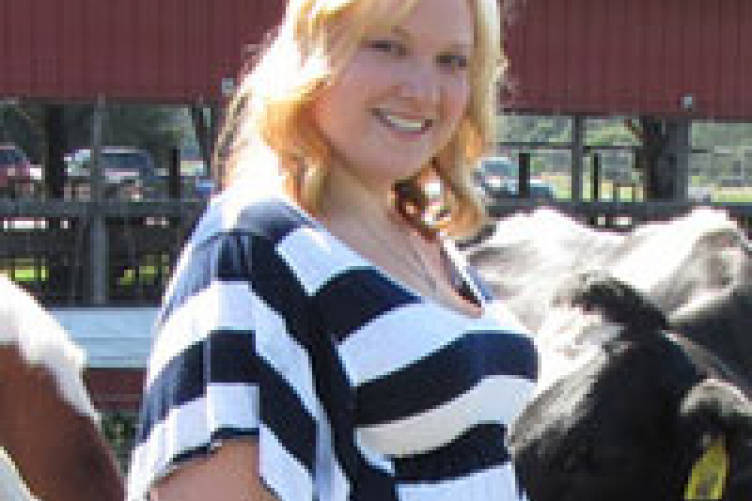
|
|
“I’ve delivered calves in high heels,” says Rosie Cabral, a Ph.D. student at the University of New Hampshire (UNH) interested in improving neonatal calf immunity to positively impact the lifetime production of dairy herds.
Cabral conducts her primary research at the Fairchild Dairy Teaching and Research Center, a New Hampshire Agricultural Experiment Station (NHAES) facility in the College of Life Sciences and Agriculture (COLSA) at UNH. In addition, she travels to regional operations to find out what farmers need to know in order to raise the healthiest and most productive milking cows. “People forget you can have long term effects from day one. It’s important to set these animals up for success, especially considering what we need from them,” says Cabral.
A single milking heifer at the Fairchild Dairy produces 81 pounds of milk a day, contributing to the supply that meets a growing demand for milk and milk products in the US and across the world. In fact, improper feeding of colostrum at birth can decrease a cow’s milk production by two pounds of milk per day in its first and second lactations. “That doesn’t sound like much,” says Cabral, “but it adds up over a 305-day lactation, multiplied by the number of animals affected.” While the loss per cow may be more than six hundred pounds of milk per lactation, the total loss for dairy herds around the globe is astronomical.
Cabral cut her teeth in the industry working forty hours a week at a commercial dairy as a full-time undergraduate. “I fed an entire barn full of heifers with a wheel barrow and shovel,” she says of a job even she was surprised to love as much as she did.
For someone who says she likes to be clean, this scientist with a flair for fashion is no stranger to hard – and sometimes dirty – work. “I’ve been knee deep in manure,” says Cabral whose extended family has been farming in upstate New York for decades. Witnessing first-hand the trials and triumphs of dairy farming has instilled Cabral with a strong desire to share her understanding of the science that informs the industry’s practices and encourage farmers to adopt methods that diminish potential pitfalls. “I want to do this for the producers that are supporting their families with a milk check; who struggle with low milk prices and high grain costs. I want to help all of them – small dairy or large,” says Cabral. “I want to see universal success for all of them, and I consider it my responsibility to help them achieve this success. I just want to know I made a difference to even one farmer struggling to make ends meet.”
While Cabral is lead by her heart, she executes her research with a practical nature. “At the end of the day, the dairy industry is a business, and we need animals that can produce what is needed. By 2050 there will be 9 billion people on the planet, which means global food production will need to increase by 70%,” says Cabral. “We know for a fact that proper feeding of calves can increase their milk production in the future. Since we have to take those calves away at birth, it’s our responsibility to make sure they’re well taken care of.”
Cabral’s research in improving neonatal calf immunity through the proper feeding of colostrum attracted the attention of the National Milk Producers Federation when they selected her as the recipient of the prestigious 2012 Hintz Memorial Scholarship Award last March. Cabral – who was surprised by this unexpected honor – plans to pay it forward by purchasing state-of-the-art refractometers, which measure the quality of colostrum, to hand out to dairy farmers in the region during extension meetings next fall.
Originally published by:
UNH Today
Written by Victoria Forester Courtland, College of Life Sciences and Agriculture. Photos by Victoria Forester Courtland.













